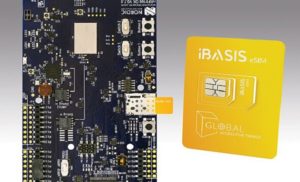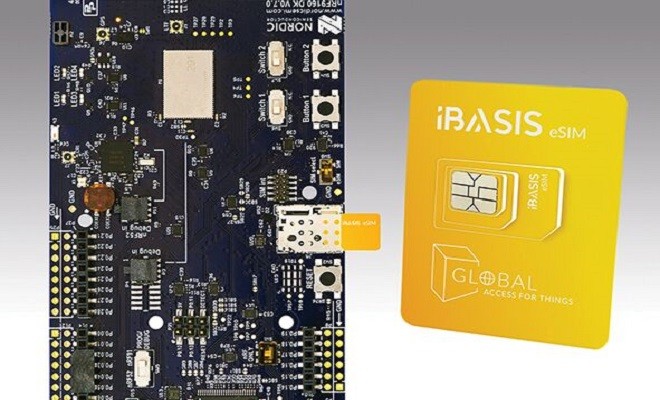- Markets include the U.S, France, and Finland for NB-IoT, the U.S, Canada, France, Australia, Japan, South Korea and more than 18 further additional countries for LTE-M.
- Nordic’s nRF9160 multi-mode NB-IoT/LTE-M SiP, Nordic Thingy:91 and iBASIS’ single eSIM were used.
 Nordic Semiconductor, in association with one of the world’s leading providers of communications solutions, iBASIS, has announced its success in using cellular IoT and eSIM technology for NB-IoT and LTE-M Low Power Wide-Area (LPWA) use cases across 30 countries.
Nordic Semiconductor, in association with one of the world’s leading providers of communications solutions, iBASIS, has announced its success in using cellular IoT and eSIM technology for NB-IoT and LTE-M Low Power Wide-Area (LPWA) use cases across 30 countries.
iBASIS says this field testing represents a critical milestone in the evolution of both NB-IoT and LTE-M cellular IoT wireless technology because it represents the first successful massive field-testing of the LPWA cellular connectivity with a single eSIM. NB-IoT and LTE-M cellular IoT devices are predicted to cross the five-billion connection mark by 2025.
Nordic Semiconductor customers are now able to connect and monitor their LPWA devices globally on iBASIS’ Open eSIM without deploying different SIM cards in each country. Nordic and iBASIS’ testing of iBASIS Global Access for Things™ is the first time a provider confirms standards-based cellular technologies, including LTE-M, NB-IoT, and eSIM, are now ready for massive IoT deployments.
First phase of testing
This first phase of field testing was completed over six months for LTE-M and intensively over the past few months for NB-IoT. As a result of this successful phase, the connectivity solution is confirmed to be ready for general release at the end of September 2019.
“We are thrilled to announce this industry first with our partner Nordic Semiconductor,” says Ajay Joseph, CTO and Head of IoT Business at iBASIS. “Building on the momentum of our successful integration of the industry’s only open eSIM from iBASIS with Nordic’s leading nRF91 Series cellular IoT modules, we have now demonstrated the first successful execution of LTE-M and NB-IoT cross markets with a single eSIM. This is critical to support the ever-increasing demand for seamless, turnkey cellular connectivity for LPWA devices globally.”
“This is a very exciting development for Nordic,” adds Nordic CEO, Svenn-Tore Larsen. It’s another important step in our journey to create the absolute best customer experience by driving simplicity, flexibility and performance in all aspects of cellular IoT for the broadest array of devices deployed across the IoT ecosystem.”
“It is good to see that iBASIS is putting a lot of effort into making both LTE-M and NB-IoT work on the same SIM,” says Jan Willem Smeenk, CEO of SODAQ. “At the stage we are currently in with the international roll-out of NB-IoT and LTE-M whereby not in all countries support both networks, it is crucial to have a partner that works hard to support both network types.”
“The time for eSIM has arrived in the IoT market and we expect it to dominate future growth of IoT cellular connections over the coming years,” says Robin Duke-Woolley, CEO of specialist IoT analyst firm, Beecham Research. “This achievement of iBASIS and Nordic is most welcome and will significantly aid market growth of NB-IoT and LTE-M in the crucial high volume, low data rate segment of the IoT market.”
Suited for different use cases
NB-IoT offers different use cases of wireless connectivity that support applications requiring very low amounts of data over long periods of time such as smart water meters. For such low power devices, narrow band supports the ability to use a small amount of data followed by inactive periods that preserve battery life. NB-IoT is predicted to dominate the market with 45 percent of global IoT cellular connections, due to the wide variety of application opportunities and faster adoption rates in the overall ecosystem. It is expected that there will be a significantly greater number of devices and use cases along this segment in the near-term evolution of the IoT market.
LTE-M specifically refers to LTE CatM1, suitable for the IoT. LTE-M is a low power wide area technology that supports IoT through lower device complexity and provides extended coverage, while allowing the reuse of the LTE installed base, including support for VoLTE.
This article is based on a PR published in the ChipsNWafers website of EFY. It can be found here.










